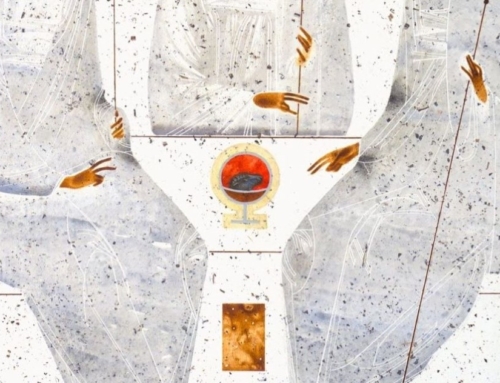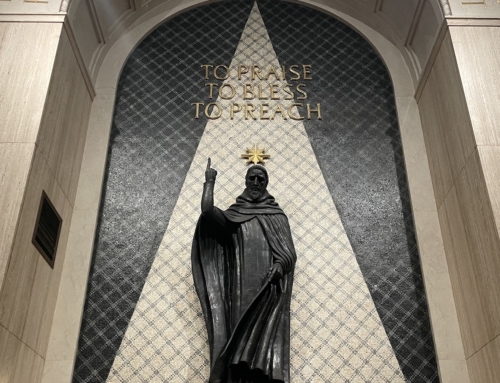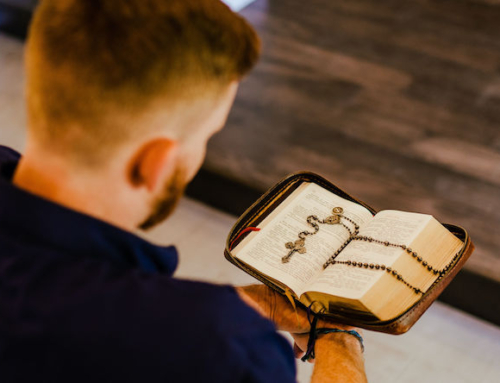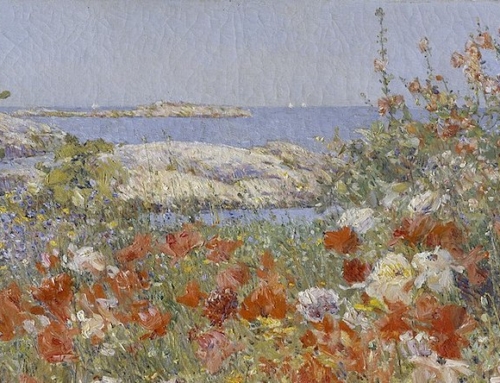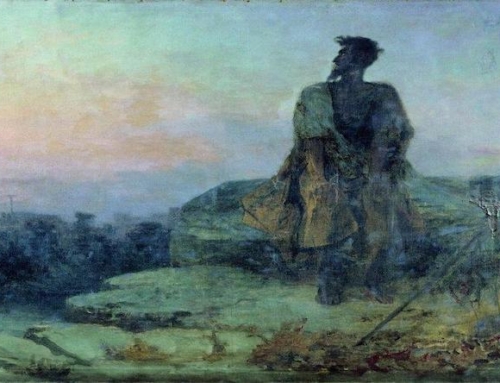Since the time of the early Church, the fortieth day after Christmas has commemorated the Presentation of the infant Jesus in the Temple. On this day, Mary and Joseph, in obedience to the commandment of the Mosaic Law, “Consecrate to me every firstborn,” brought their Child to the House of God, and when they crossed its threshold, the Most High entered His holy dwelling-place in the flesh for the first time. For centuries, Christians have celebrated this mystery by processing into church with newly blessed candles, and so today, marking the unofficial end of the Christmas season, is called “Candlemas”.
Yet in this country, mainly due to the influence of German Protestant immigrants in Pennsylvania, today is better known as “Groundhog Day”, and it is celebrated by consulting an irrational rodent about the prospects of an early spring. Additionally, since 1993, when Harold Ramis’s movie Groundhog Day was released, the term has taken on a more general meaning, denoting any unpleasant, repetitive, and inescapable situation, such as that experienced by the film’s main character, Phil Connors.
Phil, played by Bill Murray, is a weatherman for a television station in Pittsburgh, and while reporting on Groundhog Day festivities in the small town of Punxsutawney, Pennsylvania, he becomes trapped inside a time loop. Unable to escape one of his least favorite places on earth, he is forced to relive the same wintry day repeatedly, with no end in sight. At first, he takes advantage of being able to live a consequence-free life. He acts crudely on television and to people he meets, gorges himself on food and drink, and tries to seduce several women, including his co-worker, Rita. Yet he is none happier as he awakes to the same situation each morning. Nothing that Phil does, not even attempts to take his own life, can break this inexorable cycle.
Then, on one run through the day, Phil witnesses the death of a homeless man, which causes him to have a change of heart. Encouraged by Rita, for whom he begins to care sincerely, he begins seeking to improve the lives of those around him. He fixes tires for strangers, rescues a boy from falling out of a tree, and saves a man from choking to death. He learns to play the piano, speak French, and ice-sculpt. By striving to live, not just for himself, but for others, and with the help of those around him, Phil is set free (albeit questionably) from his existential rut.
In today’s Gospel reading, a very different and more profound liberation takes place: that of the devout old man, Simeon. Not much is known about him, but, significantly, St. Luke describes him as “awaiting the consolation of Israel” (2:25). Israel, as we know from the Old Testament, seems to have been trapped in an inescapable time loop of its own. Over and over again, the Israelites turned away from God, and over and over again, God called them back to Him. As with Phil Connors, they could not break free from their vicious cycle, for only God Himself could bring them consolation.
This consolation is what Simeon awaited with anxious expectation. Hardly leaving the Temple for fear of missing the coming of the Messiah, he endured his own kind of circular futility, as year after year went by. Thus, when at last he beheld the Anointed One, he took Him into his arms and uttered the inspired words of the Nunc Dimittis—the same words that the Church sings every night at Compline:
Lord, now You let Your servant go in peace;
Your Word has been fulfilled.
My own eyes have seen the salvation
Which You have prepared in the sight of every people:
A light to reveal You to the nations,
And the glory of Your people Israel. (Luke 2:29-32)
It is Jesus Christ, the Light of the world, who frees us from the otherwise inescapable darkness of sin, and today the Church calls this to mind with the blessing of candles. As we take these candles in our hands and proceed to the holy place, to commemorate the fact that Christ our Light has entered His Temple, our forward motion puts an end to the circular path of selfishness and error and symbolizes our journey toward Heaven.
In the Greek-speaking East, this feast of Candlemas is known by yet another name: He Hypapante, or “The Encounter.” Simeon’s encounter with Christ, whose saving death he predicts, frees him from the anxiety of expectation and prepares him to depart this life in peace. Similarly, though on a less profound level, Phil’s encounter with the dying man spurs him on to acts of charity and leads him to a more peaceful existence.
By encountering Christ, we, too, can be transformed; we, too, can be freed from the monotony of sin and set on the road to eternal life. Indeed, only through the grace of such an encounter can we hope to escape the kind of spiritual winter that Phil Connors describes with such bitter despair: “It’s gonna be cold; it’s gonna be grey; and it’s gonna last you for the rest of your life.”
Photo by Abigail Lynn on Unsplash


